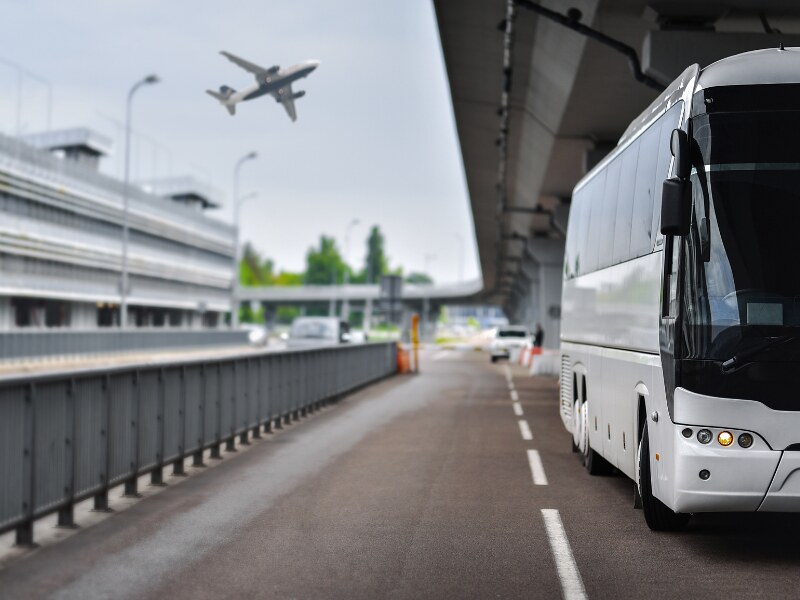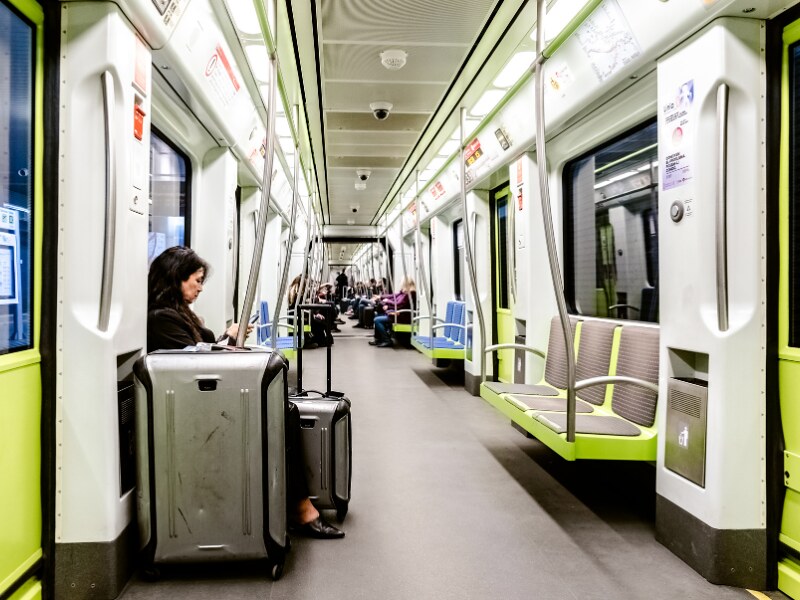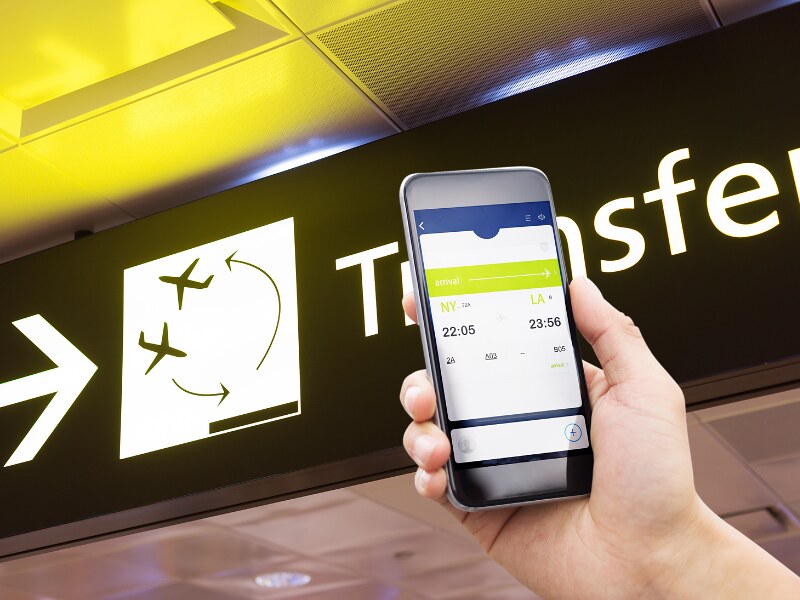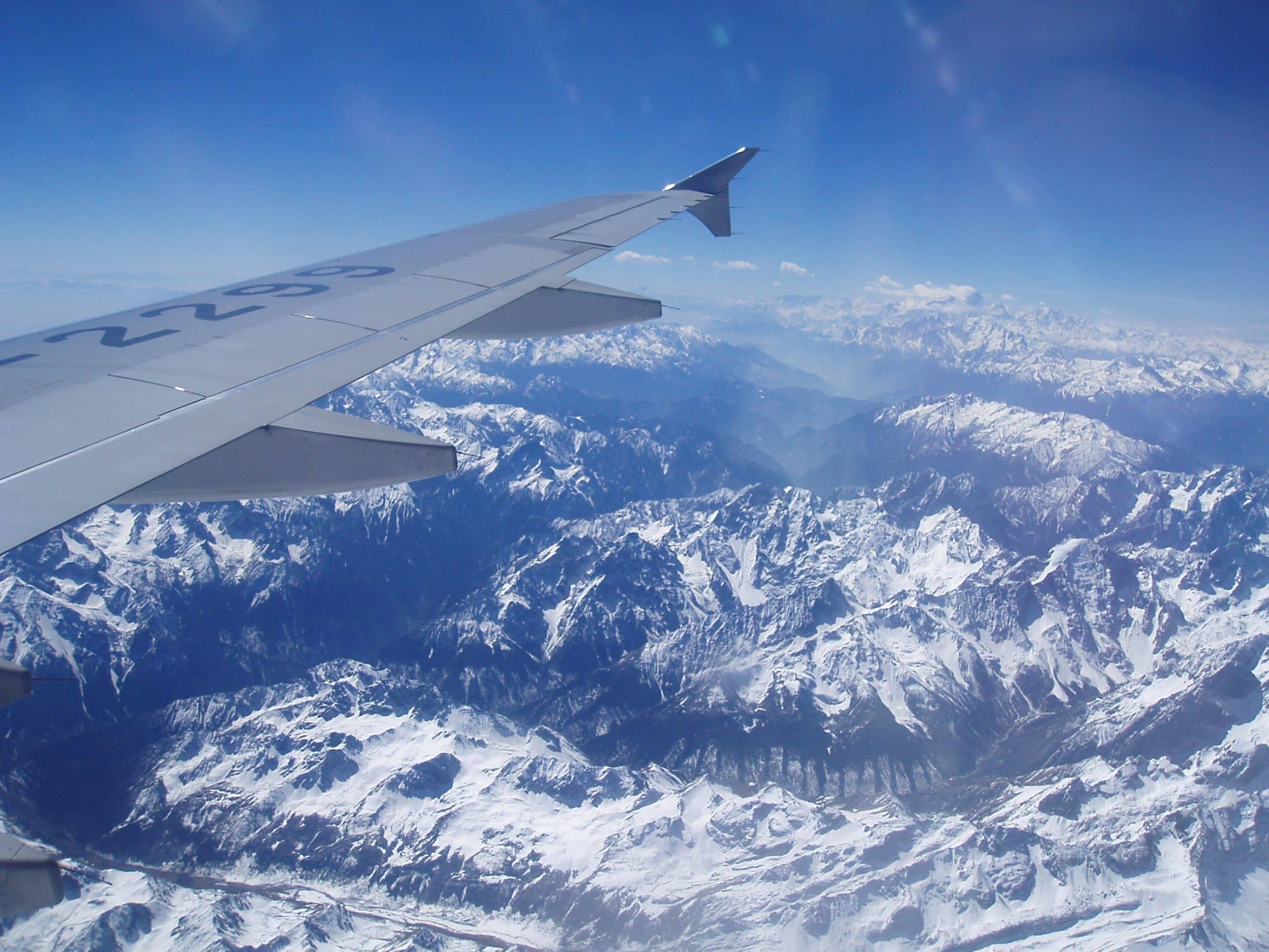Transit vs transfer: What’s the difference?
Wondering what the difference is between transit vs transfer in airports? Get the answer right here.

Does transit and transfer sound the same to you?
Although they sound similar, these air travel terms actually mean different things.
Don’t worry though, even seasoned travelers mix up similar-sounding terms.
In my series of air travel terms, I’m covering the commonly misunderstood flight and airport vocabulary.
Today, we’re taking a look at the two often mixed-up terms: transit vs transfer so you can get them right.
Let’s dive in.
This post contains referral links for products I love. Adventurous Miriam earns a small commission at no extra cost to you if you purchase through my links. I appreciate your support ♡ Learn more
Understanding air travel lingo
Air travel has its own language, with lots of similar-sounding words that can be overwhelming at first. But taking the time to learn these terms can actually make your journey much easier.
So, what does transit in air travel mean?
Transit: In air travel, “transit” is a brief stopover with the same plane on your way to the final destination.
Here’s an example:
You’re flying from San Francisco to Bali with a stopover in Tokyo. If you wait in Tokyo Airport without stepping foot outside and then hop back onto your flight, you’re in transit.
Your checked-in suitcase will go straight to your final destination, so you only need to keep your carry-on bag with you.

What is transfer in air travel?
Transfer: In air travel, a “transfer” is when you switch planes or even airports during a layover.
Transfer in air travel is a different ball game.
You’re transferring when you need to switch flights at an in-between airport. This could mean changing terminals or even airports, and sometimes, you might have to deal with your luggage too.
To ace the transfer process, make sure you’ve got plenty of time between flights. And double-check whether you need to pick up and recheck your luggage or if the airline’s got that covered.

Differences between transit and transfer
Transit and transfer both involve a pit-stop in your journey, but they’re not the same.
If you’re transiting, you’re staying put in the same airport, and your luggage is taken care of. But if you’re transferring, you might need to switch airports or terminals and possibly deal with your luggage.
Here’s a quick rundown of the key differences:
| Aspect | Transit | Transfer |
|---|---|---|
| Definition | Staying in same airport for next flight. | Switching flights or airport for next flight. |
| Location | Same airport. | May change terminal or airport. |
| Luggage | Handled by airline. | May need to recheck. |
| Visa | Usually not required. | Depends on country’s rules. |
| Duration | Varies greatly. | Depends on flight schedules. |
Tips for smooth transits and transfers
To make sure your journey is stress-free and smooth, it’s always a good idea to check the transit/transfer time and understand how your luggage will be handled at each stage of your trip.
And don’t forget to find out if you need a visa for your destination in advance. That way, you won’t have any last-minute surprises or inconveniences.

Plan ahead
Make sure to always check your transit or transfer times before you start your journey. This simple step will help you plan your trip better and avoid any last-minute rush or stress.
Just take a moment to verify your transit or transfer details, and you’ll have an easier travel experience.
Also, make sure to pack smartly. Keep your passport and boarding pass within easy reach so you can find them. You don’t want to be stuck searching through your bag at a security checkpoint.
And don’t forget to give yourself enough time when moving from one place to another. Some airports are huge and you’ll need to go by metro, train or bus to reach your terminal.

Do you need to recheck your luggage?
If you have transfers, make sure to check with your airline if you need to collect and recheck your luggage.
They usually inform you when you book the ticket, but better safe than sorry. That’s my motto.
And don’t forget to allow enough time for the process and double-check that all your bags made it onto the connecting flight.
Do you need a transfer visa?
You might be traveling to your final destination but have a layover or stopover on the way. Some countries require a transit visa. This means that you will have to apply for a visa before your trip!
For instance, if you’re coming from Europe, Australia or Asia and have a layover or stopover in the U.S, you’ll need a transfer visa. That’s right.
Even if you’re not leaving the airport. So make sure to check this at least a month before your trip so you can get your visa in time.
Relax and restock at the airport
Airports have got you covered with plenty of facilities to make your wait super comfy.
From lounges to duty-free shopping and restaurants, you should definitely make the most of what’s available.
And hey, if you’ve got a stopover, why not check out the local sights? I’ve done that many times and it’s a great way to explore a new destination.

To sum it up
So there you have it!
Transit means you’re staying within the same airport, while transfer could involve changing airports or terminals. Knowing the difference can take a load off your mind and help you plan your journey better.
I hope this cleared up the whole transit vs transfer confusion. If not, send me a message and I’m glad to help.
Happy travels!
FAQ about transit vs transfer
What is the difference between transit and transfer?
In air travel, “transit” means you’re on a stopover but continue with the same aircraft. On the other hand, a “transfer” involves switching planes during a stopover.
What does transfer mean in transit?
In transit, a “transfer” means you switch from one plane to another during a stopover as part of your journey.
Is connecting flight same as transit?
A connecting flight involves a stop where you switch planes. This is slightly different from transit, where you continue your journey with the same aircraft after a brief layover.
What does it mean to be in transit at the airport?
Being “in transit” at the airport means you are on a layover during your journey, but you continue with the same aircraft to your final destination.






